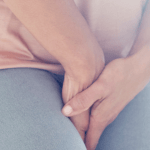Understanding Menopause and Its Impact on Urinary Health
Menopause marks the end of a woman’s reproductive years, typically occurring between the ages of 45 and 55. It is diagnosed after 12 consecutive months without a menstrual period. This natural biological process is characterized by a decline in the production of the hormones estrogen and progesterone by the ovaries. The reduction in estrogen levels leads to various systemic changes, including alterations in the urinary tract, which can impact urinary health significantly.
The Connection Between Menopause and Urinary Tract Health
As women transition through menopause, the decrease in estrogen levels can affect the lining of the bladder and urethra, potentially leading to a range of urinary symptoms. These may include increased frequency of urination, urgency, and a heightened risk of developing urinary tract infections (UTIs). The changes in the urogenital microbiome, with a reduction in protective lactobacilli and an increase in vaginal pH, create an environment more susceptible to pathogenic bacteria, which can ascend the urinary tract and cause infections.
Estrogen’s Role in Urinary Tract Infections (UTIs)
Estrogen plays a crucial role in maintaining the health of the urogenital tract. It helps keep the tissues of the vagina and urethra elastic and moist, supports the growth of lactobacilli, and maintains a low vaginal pH, which together protect against the colonization and invasion of pathogenic bacteria. With menopause, the decline in estrogen can lead to thinning of these tissues, dryness, and a compromised local immune defense, making postmenopausal women more vulnerable to UTIs.
Statistics: Prevalence of UTIs in Postmenopausal Women
Statistical data indicates a significant prevalence of UTIs in postmenopausal women. Research suggests that the rate of recurrent UTIs, defined as two or more infections within six months or three or more within a year, increases with menopause. Approximately 55% of postmenopausal women experience recurrent UTIs, highlighting the impact of hormonal changes on urinary health. The increased risk of UTIs post-menopause underscores the importance of understanding and addressing the unique health needs of this population.
Exploring Urinary Tract Infections (UTIs)
What Constitutes a Urinary Tract Infection?
A Urinary Tract Infection, commonly referred to as a UTI, is an infection that occurs within the urinary system. It can affect any part of the urinary tract, including the kidneys, ureters, bladder, and urethra. Most commonly, UTIs involve the lower urinary tract, which encompasses the bladder and the urethra. UTIs are caused by microbes, predominantly bacteria, that enter the urinary tract and overcome the body’s natural defenses, leading to infection. The most common bacterium causing UTIs is Escherichia coli (E. coli), which is typically found in the gastrointestinal tract.
Why Women Are More Susceptible to UTIs
Women are at a higher risk for UTIs compared to men due to anatomical differences. The female urethra is shorter, which provides a quicker path for bacteria to reach the bladder. Additionally, the urethral opening is in close proximity to the vagina and anus, areas where bacteria are commonly found, increasing the risk of bacterial migration into the urinary tract. Hormonal changes, particularly during menopause, can also affect the urinary tract’s environment, making it more susceptible to infections.
The Anatomy of the Female Urinary System
The female urinary system consists of the kidneys, which filter waste from the blood to produce urine; the ureters, tubes that transport urine from the kidneys to the bladder; the bladder, where urine is stored; and the urethra, through which urine is expelled from the body. The design of this system, particularly the short length of the female urethra, is a key factor in the increased incidence of UTIs in women.
Common Symptoms and Diagnosis of UTIs
UTIs can present with a range of symptoms, including a strong, persistent urge to urinate, a burning sensation during urination, passing frequent, small amounts of urine, and urine that appears cloudy or red, signifying blood. There may also be a strong smell to the urine. In more severe cases, UTIs can lead to kidney infections, which may cause back pain, fever, and chills. Diagnosis typically involves a urine sample to identify the presence of bacteria and white blood cells. In recurrent or complicated cases, further diagnostic imaging or a cystoscopy may be required. It is crucial for individuals experiencing symptoms of a UTI to seek medical attention for appropriate diagnosis and treatment.
Factors Contributing to UTIs During Menopause
Hormonal Changes and Bacterial Imbalance
Menopause brings about significant hormonal changes, particularly a decline in estrogen levels. Estrogen plays a crucial role in maintaining the health of the urogenital tract by keeping the tissues of the vagina and urethra elastic and moist. With the onset of menopause, the decrease in estrogen can lead to a thinning of these tissues, making them more susceptible to infection. Additionally, estrogen is responsible for promoting the growth of Lactobacillus, a beneficial bacterium that helps maintain a healthy vaginal flora. A reduction in estrogen can result in a decrease in these protective bacteria, leading to an imbalance that favors the growth of pathogenic bacteria, thereby increasing the risk of urinary tract infections (UTIs).
Thinning of Vaginal Tissue and Its Consequences
The thinning of vaginal tissue, known as vaginal atrophy, is a direct consequence of reduced estrogen levels. This condition not only causes dryness and irritation but also compromises the natural defense mechanisms against UTIs. The weakened tissues become less effective at acting as a barrier to bacteria, which can more easily penetrate and ascend to the bladder. The use of topical estrogens has been shown to help restore the thickness and health of vaginal tissue, thereby reducing the risk of UTIs.
Bladder Function and Incomplete Emptying Risks
Menopause can also affect bladder function. The muscles of the bladder and pelvic floor may weaken, leading to issues such as urinary incontinence and incomplete emptying of the bladder. When the bladder does not empty fully, it can create an environment conducive to bacterial growth and infection. Ensuring complete bladder emptying and managing incontinence are important strategies in reducing the risk of UTIs during menopause.
Chronic UTIs and Their Impact on Life Quality
Chronic UTIs are defined as having three or more infections in a year or two or more within six months. They can have a profound impact on a woman’s quality of life, causing persistent discomfort, anxiety, and disruptions to daily activities. Postmenopausal women are at a higher risk for recurrent UTIs, with rates of recurrence increasing to 55% after menopause. It is essential for women experiencing chronic UTIs to seek medical attention to manage this condition effectively. Treatment options may include low-dose antibiotics for prevention or vaginal estrogen therapy, which has been shown to reduce the risk of UTIs by more than 75 percent.
Natural Prevention and Management of UTIs
Hydration: The Importance of Water Intake
One of the simplest yet most effective ways to prevent UTIs is to stay adequately hydrated. Drinking water regularly helps to dilute urine and ensures that you urinate more frequently, allowing bacteria to be flushed from the urinary tract before an infection can begin. A 2019 study found that increased fluid intake led to a decrease in UTI frequency among premenopausal women prone to recurrent infections.
Urination Habits: Frequency and Post-Sexual Activity
Adopting healthy urination habits can also play a crucial role in preventing UTIs. It is important not to hold urine for too long as this can lead to a buildup of bacteria. Urinating after sexual activity is particularly recommended as it can help to eliminate any bacteria that may have been introduced during intercourse.
Natural Products and Feminine Hygiene
When it comes to feminine hygiene, less is often more. Avoiding harsh soaps and douches that can disrupt the natural flora of the vagina is advisable. Instead, opt for gentle, unscented products and ensure to wipe from front to back to prevent bacteria from the rectum from spreading to the urethra.
Cranberries: A Natural Remedy for UTI Prevention
Cranberries have long been touted for their UTI-preventing properties. They contain compounds that can prevent bacteria from adhering to the lining of the urinary tract. While cranberry juice is the most well-known form, cranberry extracts and supplements are also available and may be a more effective option for those who do not enjoy the taste of the juice or are concerned about the high sugar content.
Pelvic Floor Exercises: The Benefits of Kegels
Strengthening the muscles of the pelvic floor through exercises such as Kegels can help improve bladder control and reduce the risk of UTIs. These exercises are particularly beneficial for postmenopausal women who may experience weakening of the pelvic floor muscles due to hormonal changes.
In conclusion, a combination of adequate hydration, proper urination habits, natural products for feminine hygiene, cranberry supplementation, and pelvic floor exercises can contribute significantly to the natural prevention and management of UTIs, especially during menopause.
When to Seek Medical Attention for UTIs
Identifying Persistent and Chronic UTIs
Urinary Tract Infections (UTIs) are a common and often painful condition, particularly prevalent among postmenopausal women. It is crucial to distinguish between occasional UTIs and persistent or chronic infections. A UTI is considered chronic if a woman experiences three or more infections in a year or two or more within six months. Symptoms to watch for include a frequent urge to urinate, pain or burning during urination, cloudy or strong-smelling urine, and pelvic discomfort. If these symptoms persist or recur frequently, it’s time to consult a healthcare provider for a thorough evaluation and appropriate management.
The Role of Antibiotics and Probiotics in Treatment
Antibiotics are the standard treatment for UTIs, with most women experiencing symptom relief within 1 to 2 days of starting the medication. However, it is imperative to complete the full course of antibiotics prescribed, even if symptoms disappear, to ensure the infection is fully eradicated and to prevent antibiotic resistance. For those with chronic UTIs, a healthcare provider may recommend a low-dose, long-term antibiotic regimen or a single dose post-sexual activity to prevent recurrence. Additionally, probiotics, particularly those containing Lactobacillus, may help restore the balance of healthy bacteria in the vagina and urinary tract, offering another layer of defense against infections.
Consulting Healthcare Providers for Recurrent Infections
Recurrent UTIs can significantly impact the quality of life and may indicate underlying health issues. It is essential for women experiencing frequent UTIs to seek medical advice. A healthcare provider may conduct tests, such as urine cultures or bladder ultrasounds, to rule out other conditions and tailor a prevention strategy. Treatments may include vaginal estrogen therapy, which has been shown to reduce the risk of UTIs by improving the health of vaginal and urethral tissues. Women should not hesitate to discuss their symptoms and treatment options, including the potential use of hormonal therapies like HRT, with their healthcare provider to manage and prevent UTIs effectively.
Remember, while UTIs are common, especially during and after menopause, they are not something one must endure silently. Seeking medical attention for persistent or chronic UTIs is a critical step in maintaining overall health and well-being.

Lifestyle Adjustments to Mitigate UTI Risks
Dietary Considerations and UTI Prevention
One of the key strategies in preventing urinary tract infections (UTIs) involves dietary adjustments. Hydration is paramount; drinking plenty of water throughout the day helps flush bacteria from the urinary tract, reducing the risk of infection. Women going through menopause should aim for at least eight 8-ounce glasses of water daily. Additionally, cranberry juice has been traditionally recommended for UTI prevention due to compounds that may inhibit bacteria from adhering to the bladder wall. However, it’s important to choose a juice with high cranberry concentration and low sugar content to avoid counterproductive effects. Foods rich in probiotics, such as yogurt, kefir, and fermented foods, can also support a healthy urinary tract by maintaining a balance of good bacteria.
Behavioral Changes to Reduce Infection Risks
Behavioral modifications can significantly impact UTI risk. Women should practice good personal hygiene, wiping from front to back to prevent bacterial transfer from the anus to the urethra. It’s also advisable to wear breathable, cotton underwear and avoid tight-fitting clothing that can trap moisture, creating an environment conducive to bacterial growth. After sexual activity, it’s important to urinate promptly to flush out potential pathogens. Additionally, avoiding potentially irritating feminine products, such as douches and powders, can help maintain natural bacterial flora and reduce UTI risk.
Sleep Patterns and Nighttime Urination
Menopausal women may experience changes in sleep patterns, which can affect nighttime urination. Disrupted sleep can lead to infrequent urination, which in turn may increase the risk of UTIs due to prolonged bladder retention of urine. To mitigate this risk, it’s recommended to reduce fluid intake in the hours before bedtime, while ensuring adequate hydration during the day. Establishing a consistent sleep routine can also promote better sleep quality and regular nighttime urination habits. If nocturia (excessive nighttime urination) is a concern, consulting a healthcare provider can lead to interventions that may improve urinary health.
In conclusion, lifestyle adjustments play a crucial role in reducing the risk of UTIs during menopause. By focusing on dietary choices, behavioral practices, and sleep hygiene, women can take proactive steps to maintain urinary tract health and prevent the discomfort and complications associated with UTIs.

Do you have the most commonly used but toxic, disease bringing chemicals in your skin care? Many chemicals in skincare are hormone disruptors and make menopause symptoms worse.
Find out more…
Conclusion: Embracing a Holistic Approach to UTI Management in Menopause
Throughout this article, we have explored the intricate relationship between menopause and urinary tract infections (UTIs). We’ve learned that menopause, characterized by a decline in estrogen levels, can lead to significant changes in urinary health. These changes increase the susceptibility of postmenopausal women to UTIs due to factors such as the thinning of vaginal tissue, alterations in the vaginal flora, and changes in bladder function.
Statistics have shown that UTIs are more prevalent among postmenopausal women, with various factors contributing to this increased risk. We’ve discussed the importance of recognizing common symptoms and the necessity of seeking timely medical attention to prevent chronic conditions and maintain a high quality of life.
The Importance of Personalized Care Strategies
One size does not fit all when it comes to managing UTIs in menopause. Personalized care strategies are paramount, taking into account the unique circumstances of each woman. Factors such as individual hormonal changes, lifestyle, and pre-existing health conditions must be considered when developing a management plan.
Healthcare providers should work closely with their patients to tailor interventions, whether they involve hormone replacement therapy, lifestyle adjustments, or the use of natural remedies. The goal is to not only treat UTIs but also to address the underlying causes and prevent recurrence.
Final Thoughts on Maintaining Urinary Health Post-Menopause
Maintaining urinary health post-menopause requires a holistic approach that encompasses lifestyle modifications, medical treatments, and preventive measures. Women should be encouraged to stay hydrated, practice good urination habits, and engage in pelvic floor exercises to strengthen the muscles involved in bladder control.
It is also essential for women to be proactive in seeking medical advice and not to dismiss UTIs as an unavoidable aspect of aging. With the right support and knowledge, menopausal women can effectively manage UTIs and enjoy a healthy, active lifestyle.
In conclusion, while menopause can present challenges to urinary health, it also offers an opportunity for women to take charge of their well-being. By understanding the changes occurring in their bodies and working with healthcare providers to create personalized care strategies, women can mitigate the risks associated with UTIs and embrace this new chapter in their lives with confidence.




















